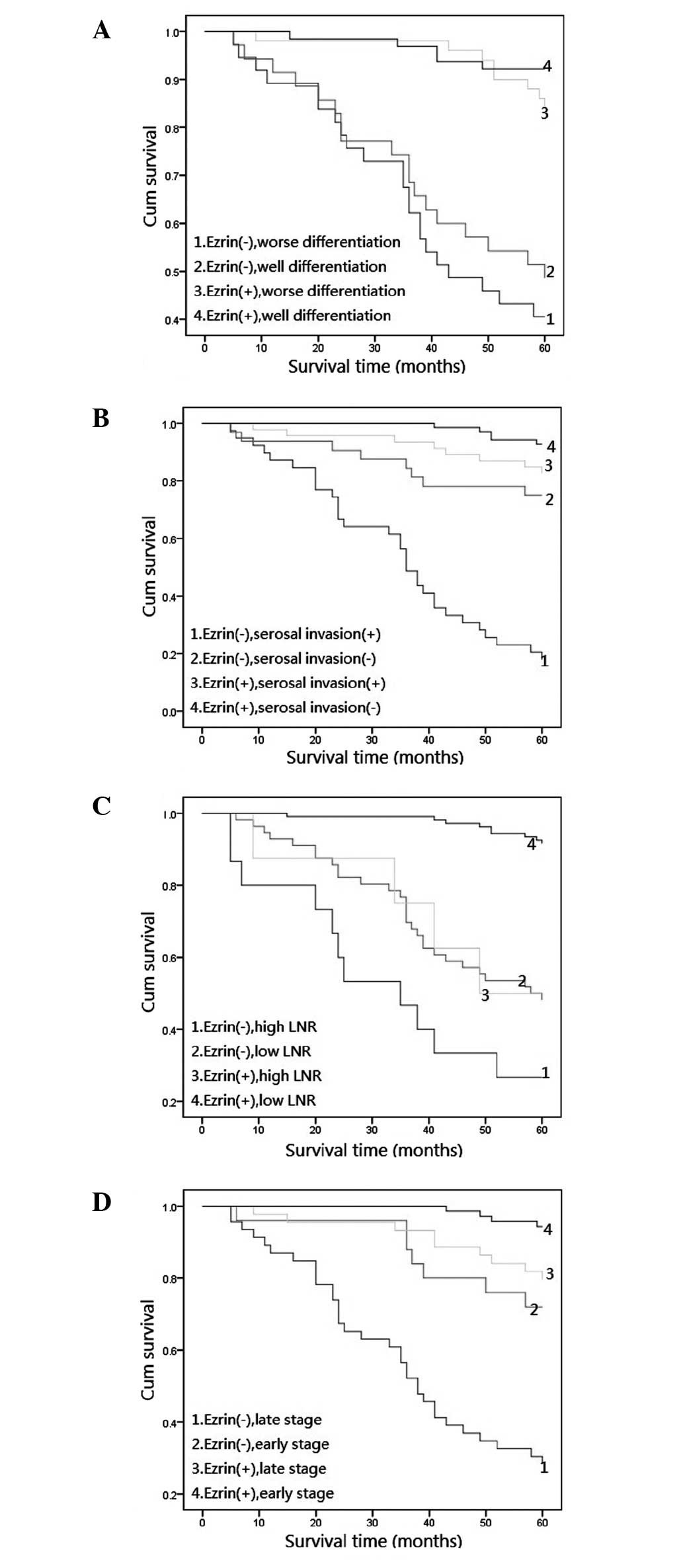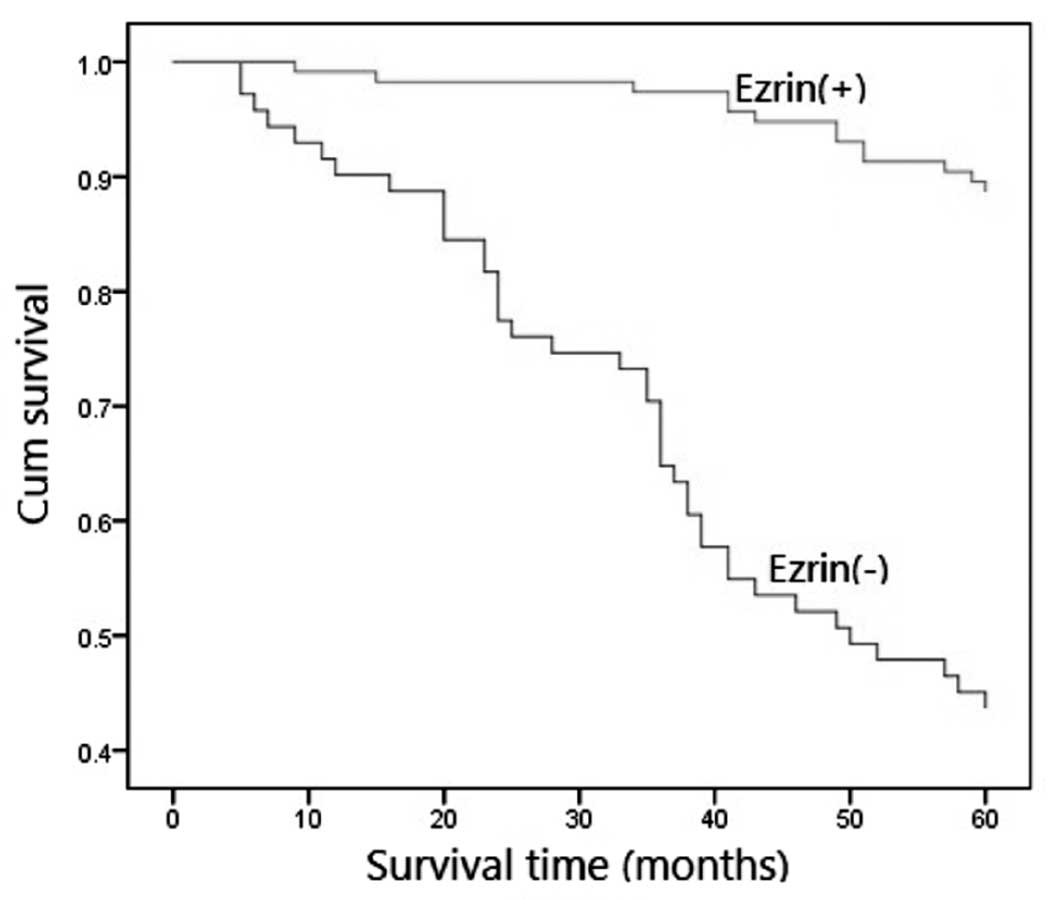Association between ezrin protein expression and the prognosis of colorectal adenocarcinoma
- Authors:
- Published online on: May 24, 2013 https://doi.org/10.3892/mmr.2013.1490
- Pages: 61-66
Metrics: Total
Views: 0 (Spandidos Publications: | PMC Statistics: )
Total PDF Downloads: 0 (Spandidos Publications: | PMC Statistics: )
Abstract
Ezrin is involved in maintaining cell structure and cell motility. Expression levels of the ezrin gene correlate with numerous human malignancies. The aim of this study was to explore the role of ezrin in tumor progression and the prognostic evaluation of colorectal adenocarcinoma (CRA). The levels of ezrin protein in 186 CRA samples were evaluated using immunohistochemistry. Furthermore, the correlation between the expression of ezrin and the clinicopathological features of CRA was evaluated with the χ2 and Fisher's exact tests, survival rates were calculated using the Kaplan-Meier method, and the correlation between prognostic factors and patient survival was calculated by Cox analysis. Ezrin protein expression demonstrated an immunohistochemical cytoplasmic staining pattern in CRA. The difference between the positive rate of ezrin expression in CRA (38.7%, 72/186) and the adjacent normal mucosal tissues was deemed to be statistically significant (91.9%, 171/186; P=0.000). The positive rate of ezrin expression in cases with a large tumor, serosal invasion, lymph node (LN) metastasis, high LN ratio (LNR) and at a late tumor stage was significantly lower than in cases without these factors (P=0.044, P=0.032, P=0.002, P=0.011 and P=0.000, respectively). The 5-year survival rate of CRA without ezrin expression was lower than CRA with expression (P=0.000). Furthermore, analysis by Kaplan-Meier demonstrated that CRA cases with poor differentiation, serosal invasion and at a late tumor stage combined with no ezrin expression had a lower survival rate than cases that had these factors plus ezrin expression (P=0.000, respectively). Additionally, the non-expression of ezrin emerged as a significant independent prognostic factor in CRA prognosis (HR, 0.562; 95% CI, 0.404-0.783; P=0.001), in addition to the LNR (HR, 0.589; 95% CI, 0.369-0.939; P=0.026) and tumor stage (HR, 0.655; 95% CI, 0.487-0.880; P=0.005). This study demonstrated that ezrin may be useful to identify at-risk patients who may benefit from a more aggressive adjuvant therapy following tumor resection. Ezrin may serve as a useful therapeutic biomarker.












